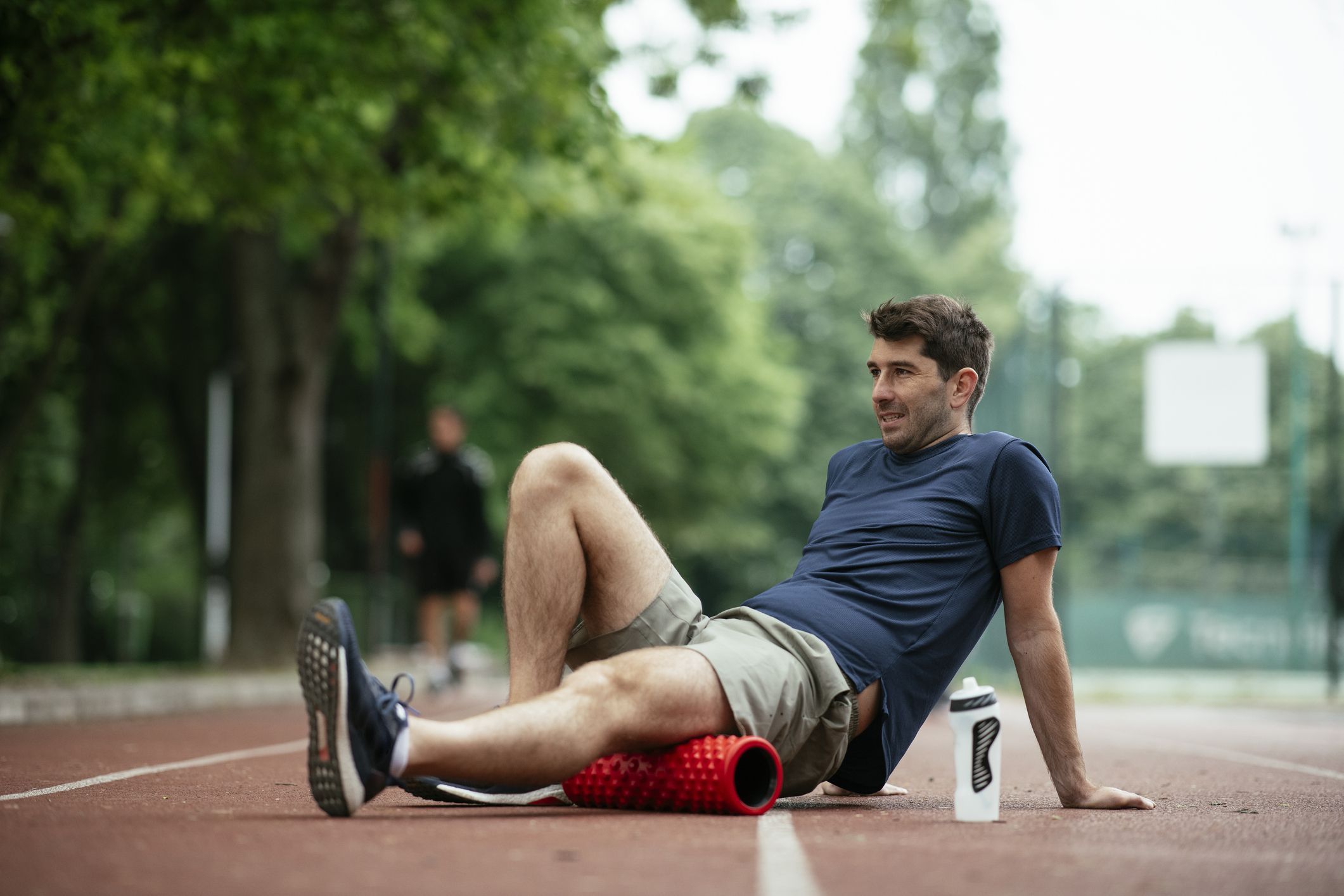Home>Misc>Featured>How Long After Giving Blood Can You Exercise


Featured
How Long After Giving Blood Can You Exercise
Published: September 26, 2023
Learn how long you should wait before exercising after donating blood. Read our featured article for guidance and tips to ensure a safe and healthy recovery.
Introduction
Donating blood is a selfless act that can save lives and make a difference in the community. However, many people wonder how donating blood affects their ability to exercise. After all, exercise is an important part of a healthy lifestyle, and it’s natural to want to maintain your fitness routine even after giving blood.
When you donate blood, your body goes through a process of replenishing the lost red blood cells. This process takes time, and it’s important to understand how it can impact your energy levels and physical performance. In this article, we will explore the effects of giving blood on the body and discuss how long you should wait before engaging in exercise post-donation.
While donating blood is a safe process, it’s essential to give your body enough time to recover before engaging in strenuous physical activity. By understanding the recovery process and following some guidelines, you can ensure a smooth transition back to your regular exercise routine.
So, if you’re wondering how long after giving blood you can exercise, read on to discover the factors that affect recovery time and the recommendations for resuming physical activity post-donation.
Effects of Giving Blood on the Body
When you donate blood, your body goes through a series of physiological changes. These changes can have immediate and long-term effects on your overall well-being. Understanding these effects is crucial in determining the appropriate waiting time before resuming exercise.
One of the immediate effects of giving blood is a decrease in blood volume. When a pint of blood is withdrawn from your body, the volume of circulating blood decreases. This can lead to a temporary drop in blood pressure and a decrease in oxygen delivery to your muscles and organs.
In addition to the decrease in blood volume, giving blood can also result in a reduction in red blood cell count. Red blood cells are responsible for carrying oxygen to your body’s tissues. When you donate blood, you are essentially losing some of these vital oxygen-carrying cells.
As a result of these changes, you may experience symptoms such as fatigue, dizziness, and lightheadedness after giving blood. It’s important to listen to your body and give yourself time to recover before engaging in strenuous physical activity.
Additionally, donating blood can lead to a temporary decrease in iron levels. Iron is an essential mineral that plays a crucial role in the production of red blood cells. Lower iron levels can lead to decreased oxygen-carrying capacity and reduced exercise performance.
Furthermore, donating blood may also lead to an inflammatory response in the body. This response is part of the healing process and is meant to repair any damage caused by the insertion of the needle during donation. However, this inflammation can temporarily weaken your immune system and make you more susceptible to illness and infection.
Giving blood is undeniably a noble act, but it’s important to recognize and respect the effects it has on your body. By allowing yourself enough time to recover, you can minimize the risks and ensure that your body is ready for exercise.
Recovery Time After Donating Blood
After donating blood, your body needs time to replenish the lost blood volume and red blood cells. The recovery time can vary from person to person, depending on several factors. On average, it takes about 24 to 48 hours for your body to fully restore the blood volume and up to four to six weeks for the red blood cell count to return to normal.
During the first 24 to 48 hours, it’s important to take it easy and avoid any vigorous physical activity. This allows your body to adjust and recover from the donation process. It’s normal to experience fatigue and mild weakness during this period.
As the days go by, you will gradually start to regain your energy and feel more like yourself. You may find that you are able to resume light exercise, such as walking or gentle stretching, within a couple of days. However, it’s still important to listen to your body and avoid pushing yourself too hard.
If you engage in intense exercise too soon after donating blood, you may experience lightheadedness, dizziness, and decreased performance. This is because your body is still in the process of replenishing the red blood cells and restoring your overall energy levels. Pushing yourself too hard can delay the recovery process and potentially put your health at risk.
It’s important to consult with a healthcare professional or follow the guidelines provided by the blood donation center regarding the specific recovery time and exercise restrictions for your individual situation. They may take into consideration factors such as your overall health, the type of donation (whole blood or specific components), and any underlying medical conditions you may have.
Remember, patience is key when it comes to recovery after donating blood. Listen to your body, give yourself the time and rest you need, and gradually ease back into your regular exercise routine when you feel ready.
Factors Affecting Exercise After Giving Blood
The time it takes to resume exercise after donating blood can vary from person to person. Several factors influence how quickly you can return to your regular workout routine. Understanding these factors can help you make informed decisions about when and how to safely resume physical activity after giving blood.
1. Overall health: Your general health plays a significant role in determining how quickly you can bounce back after blood donation. If you have any underlying health conditions or if you experience complications during or after the donation, it may take longer for your body to recover.
2. Donation type: The type of donation you made can also affect your recovery time. If you donated whole blood, the recovery time is generally shorter compared to donating specific blood components, such as plasma or platelets. This is because donating specific components requires additional time for your body to replenish those specific cells.
3. Hydration status: Hydration is crucial for healthy blood flow and overall bodily functions. Staying well-hydrated before, during, and after the donation can help minimize the impact on your body and aid in a faster recovery. Drink plenty of fluids, especially water, to support the replenishment of blood volume and maintain proper circulation.
4. Iron levels: As mentioned earlier, donating blood can temporarily lower your iron levels. If you already have low iron levels or have been diagnosed with iron deficiency anemia, it may take longer for your body to restore iron stores. Adequate iron levels are essential for oxygen transport, and low iron can lead to reduced exercise performance and fatigue.
5. Fitness level: Your current level of fitness can also influence how quickly you can resume exercise. If you are already physically active and have a good baseline level of cardiovascular fitness, you may be able to return to exercise sooner than someone who is less fit. However, it’s still important to give your body enough time to recover and gradually increase the intensity and duration of your workouts.
It’s crucial to take these factors into account and listen to your body when determining when to resume exercise after donating blood. Be sure to consult with a healthcare professional if you have any concerns or questions about your specific situation.
Recommendations for Exercising After Donating Blood
While it’s important to give your body time to recover after donating blood, exercise can still be a part of your routine. Here are some recommendations to help you safely and effectively resume physical activity after giving blood:
1. Wait for 24 to 48 hours: During this initial recovery period, it’s crucial to avoid intense exercise. Allow your body to rest and gradually regain its strength.
2. Start with light activities: Once you feel ready to resume exercise, start with low-intensity activities like walking, gentle stretching, or yoga. Listen to your body and gradually increase the duration and intensity of your workouts.
3. Stay hydrated: Proper hydration is essential for optimal recovery. Drink plenty of fluids, especially water, to support blood volume and energy levels.
4. Incorporate strength training: Strength training exercises help improve muscular strength and maintain bone density. Begin with light weights or bodyweight exercises and gradually increase the load over time.
5. Monitor your energy levels: Pay attention to how your body responds to exercise. If you feel excessively fatigued, lightheaded, or dizzy, take a break and rest. It’s important not to push yourself too hard too soon.
6. Prioritize nutrition: Eating a well-balanced diet rich in iron, vitamins, and minerals will help support your body’s recovery process. Include foods like lean proteins, leafy greens, whole grains, and fruits in your meals.
7. Listen to your body: Everyone’s recovery time can vary, so it’s crucial to listen to your body’s cues. If something doesn’t feel right or you experience prolonged fatigue, consult a healthcare professional.
8. Follow medical advice: If you have any specific guidelines or restrictions provided by the blood donation center or your healthcare provider, make sure to follow them closely.
Remember, the goal is to gradually build back your fitness level over time. Be patient, be kind to your body, and celebrate the fact that your blood donation has made a positive impact on someone’s life.
Conclusion
Donating blood is a noble act that can save lives, and it’s natural to wonder how it affects your ability to exercise. Understanding the effects of giving blood on your body and the recommended recovery time is essential to ensure a safe and effective return to physical activity.
After donating blood, your body needs time to replenish the lost blood volume and red blood cells. On average, it takes about 24 to 48 hours for the blood volume to fully restore and several weeks for the red blood cells to reach normal levels again.
Factors such as overall health, type of donation, hydration status, iron levels, and fitness level can influence how quickly you can resume exercise. It’s crucial to take these factors into consideration and consult with healthcare professionals if needed.
Following recommended guidelines, such as waiting for the designated recovery time, starting with light activities, staying hydrated, and monitoring your energy levels, can help you safely return to your exercise routine after donating blood.
Remember to listen to your body and give yourself the time and patience required for a full recovery. Resuming exercise gradually and prioritizing proper nutrition will support your body’s healing process.
By giving blood and taking care of your body, you are making a positive impact on both your own health and the lives of others. So, if you’re wondering how long after giving blood you can exercise, follow the recommendations, and enjoy the benefits of maintaining an active lifestyle while continuing your impactful blood donation journey.









